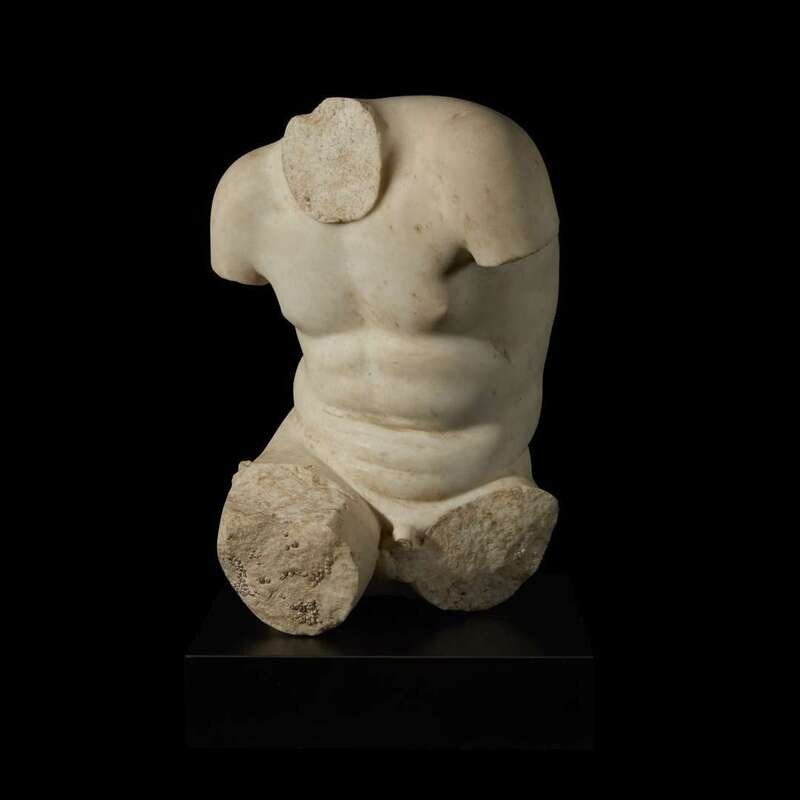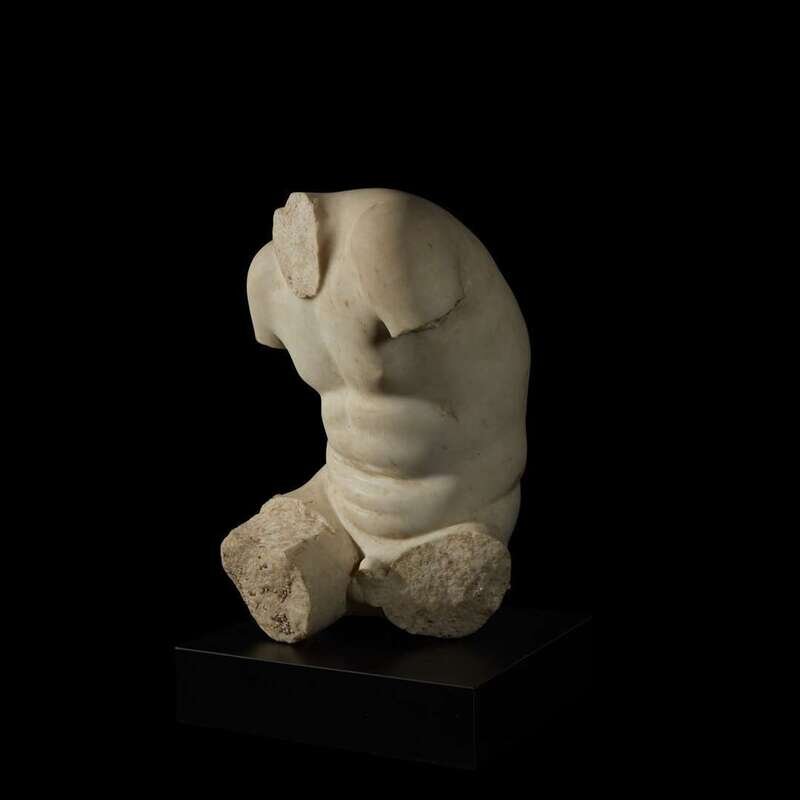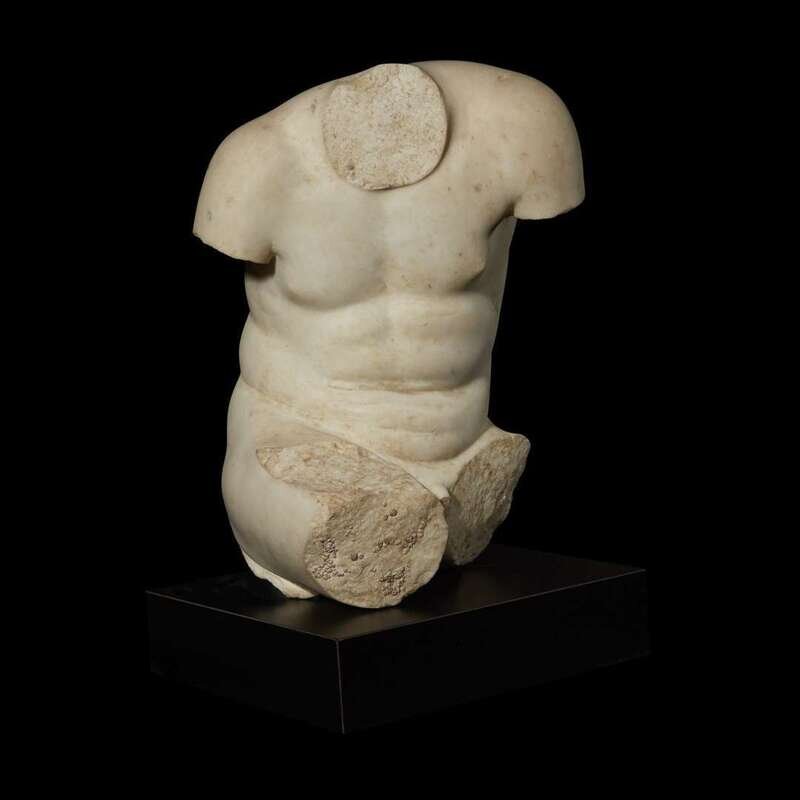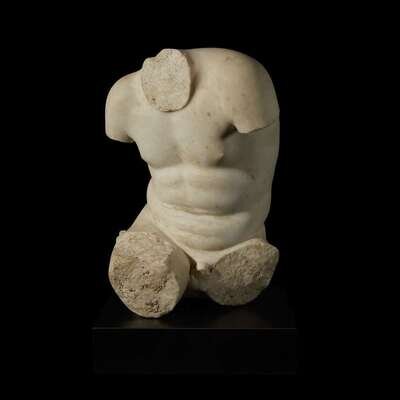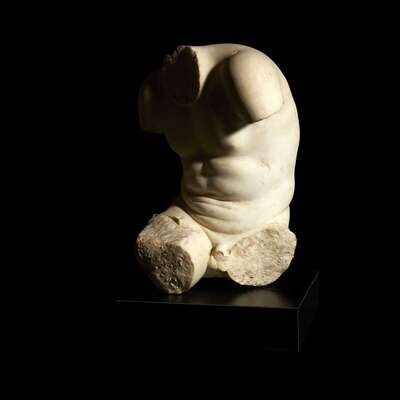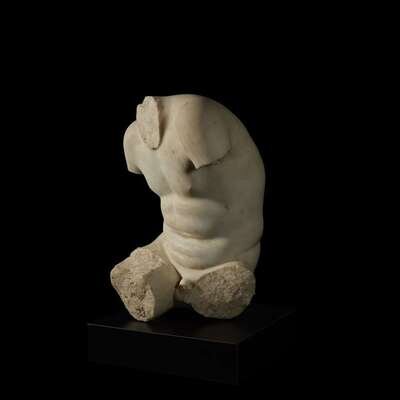Condition Report
Contact Information
Lot 23
ROMAN TORSO OF THE "SPINARIO" 1st Century BC-1st Century AD
Sale 5146 - The Jeff Hunter Collection | Antiquities and Tribal Art
Mar 13, 2019
10:00AM ET
Live / Philadelphia
Own a similar item?
Estimate
$30,000 -
50,000
Price Realized
$93,750
Sold prices are inclusive of Buyer’s Premium
Lot Description
ROMAN TORSO OF THE "SPINARIO" 1st Century BC-1st Century AD
Carved marble, the seated youth hunched slightly forward and turned to his right. His left leg (now lacking) would have been crossed over his right thigh to enable him to remove a thorn from his foot. Raised on a bespoke mount.
H: 19 in.
